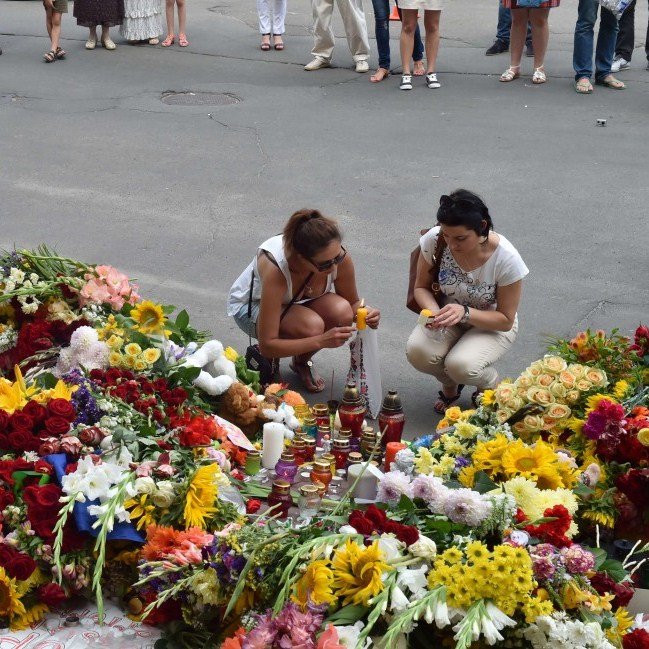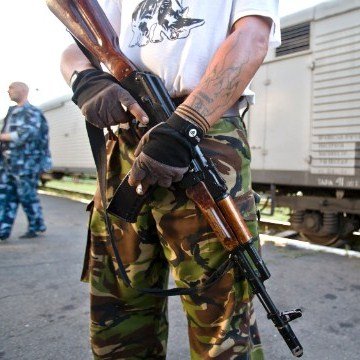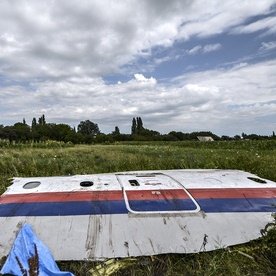The crash of Malaysia Airlines flight MH17 over rebel-controlled area of eastern Ukraine thrust the conflict between the Ukrainian government and the Russia-backed rebels into renewed international focus. The three months-long conflict has been retreating to the backburner of the international news coverage, even as the humanitarian crisis in the region engulfed by the rebellion and the death toll has been growing. The MH17 tragedy draws renewed western attention to the conflict in Eastern Ukraine and has all the potential to further aggravate relations between Russia and Ukraine and Russia and the West. The investigation of the plane crash is also sure to raise broader questions than the crash itself, such as what kind of heavy armaments the separatists possess and how they acquired it, Russia’s role in supplying the separatists, and even whether Russia’s own regular forces have engaged in attacks against the Ukrainian side. Just the day before the plane crash, videos of Grad rocket launchers firing from the Russian side of the border in the direction of Ukraine appeared on YouTube, and the precise location has of the rockets has been identified as the north-west section of the Russian border town of Gukovo. The issue of whether and to what extent the Ukrainian forces are taking sufficient measures to avoid civilian deaths when battling with the pro-Russian separatists is also likely to draw increased attention.
While the exact causes of the crash remain to be determined, Ukraine, Russia, and the rebels have been trading accusations with no apparent limit to the audacity of some of the claims. Russia’s President Putin blamed the Ukrainian side for the crash, while the Russian state-controlled media posted links to the Twitter account allegedly belonging to a Spanish air traffic controller who said that two Ukrainian fighter jets were spotted near the MH17 plane before it went down. Other Russian media went as far as to claim that the intended target of the missile that brought down the plane was none other than Vladimir Putin, whose jet looks similar and was allegedly traveling almost the same route as the Malaysian Airlines jet shortly before the crash.
The Ukrainian President Petro Poroshenko has called the downing of the plane an “act of terrorism,” and other Ukrainian officials claimed that the jet was downed by the pro-Russian rebels using a Buk surface-to-air missile system. The available evidence so far suggests that this is the most likely reason of the crash, although any definitive conclusions would be premature at this point. The pieces of evidence pointing to the rebel responsibility also offer insights into the larger dynamics of conflict in eastern Ukraine, including relations among different groups of the pro-Russian rebels and between the rebels and Russia. It also goes to show how conflicting claims in the information war leave even seemingly simple factual questions without clear answers.
Since the beginning of June, the separatists have shot down several Ukrainian military aircrafts, including two earlier this week. The Malaysian jet, flying at the altitude of some 10,000 meters, likely could be brought down only by a sophisticated weapons system such as the Russian-made Buk surface-to-air missile system. Ukrainska Pravda Web site posted a collection of links, screen shots, and Twitter posts in support of a theory that the plane was shot by the pro-Russian rebels who likely mistook it for a Ukrainian military transport plane. On June 29, separatist Web sites reported that the rebels have acquired an unknown number of Buk surface-to-air missile systems after taking over a Ukrainian anti-aircraft defense military base in Donesk. On July 14, after a Ukrainian AN-26 plane was shot down in eastern Ukraine, the separatists claimed that they had shot down a plane with the Buk system they captured at the end of June and have since repaired. On Thursday, hours before the Malaysian jet went down, Twitter users reported seeing a Buk system in the rebel-held town of Torez, about 20 kilometers south of the site of the MH17 crash, moving in the direction of the neighboring town of Snizhne. The Associated Press reported that its journalist also saw on Thursday a launcher similar to the Buk missile system near Snizhne. Shortly before the crash was announced, separatist commander Igor Girkin (Strelkov) posted on his vkontakte page that rebel forces shot down Ukrainian AN-26 plane near Torez (the post has since been deleted). Later on Thursday, the Ukrainian Security Service released what it claimed was an intercepted phone conversation, in which a separatist militant nicknamed “Major” is saying the plane was shot down by “Cossacks from the Chernukhino roadblock.” Chernukhino is a village about 20 kilometers northwest of the village of Hrabove where the plane came down, and about 35 kilometers northwest of Torez where Buk system was spotted earlier in the day.
While the fact that the separatists do possess a Buk system is clear, where they got it is less so. The Ukrainian Defense Ministry has denied that the separatists captured Buk systems when they took over the air defense military base in Donetsk at the end of June, claiming that all military equipment had been relocated elsewhere and only broken down cars were left. Since a substantial section of the Ukrainian-Russian border in the Donbas region is not controlled by the Ukrainian forces, the Buk systems could have also been supplied by Russia and sent over the border, although there is no definitive information as to whether this happened and if so when.
With the downing of the plane coming on the heels of the U.S. expanding sanctions against Russia for its support of separatists in Ukraine, targeting major banks, energy and defense companies, as well as individuals, some analysts have suggested that another theory that needs to be considered is that the downing of the plane is Russia’s response to sanctions: stepping up support for separatists is Russia’s response to tougher western sanctions.
For Ukraine, fully committing to and actively enabling a full international investigation would be the best course of action to clear its military of any suspicions and to earn greater international support. Russia will most likely continue to deny that it had anything to do with the shooting of the plane and, if the separatists get further implicated in the shooting, will likely maintain that the equipment they used was captured by them from the Ukrainian military rather than supplied by Russia. But after this tragic loss of life and the very sudden and very personal internationalization of the conflict in Eastern Ukraine, international and especially European patience with Putin may finally start to wear thin. The EU has been unwilling to impose deeper sanctions aimed against Russia for supporting separatists in Ukraine, but if Russia-backed and Russia-armed rebels are found to be responsible for ending more than a hundred of European lives, this might change the political calculus in European capitals.
Prospects for lasting peace and the end of conflict in Ukraine remain elusive, although it is possible to imagine a scenario whereby this incident reduced the level of fighting in Ukraine. Such a scenario would likely involve a truce to allow investigators access to the crash site, a gradual transformation of this truce into a lasting cease-fire; the decisive end of Russia’s support for the separatists in exchange of avoiding further sanctions; the return of Russian fighters to Russia and broad amnesty offered to Ukrainian citizens who participated in the insurgency; a more comprehensive decentralization initiative that would give more autonomy to Ukraine’s regions than the one unveiled by President Poroshenko recently; and snap local legislative elections to give the people of the Donbas (and other Ukrainian regions) legitimate representatives who can speak for their interests in the post-Yanukovych era. This is a scenario under which none of the parties in the conflict would get their ultimate preference, but in which violence would begin to recede. Whether any of this is possible as long as the key actors in the conflict continue to think they can win outright, though, remains to be seen.
See the original post © The Monkey Cage











